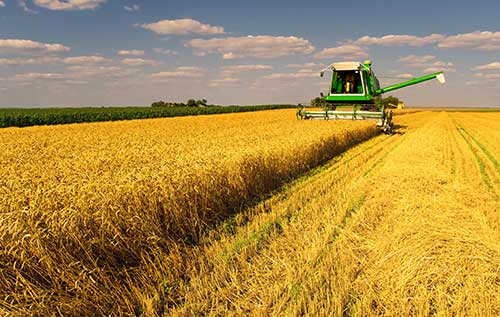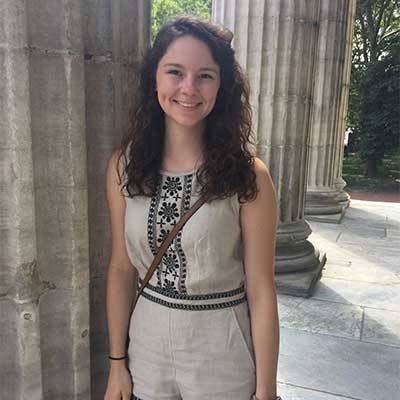Michael Carolan's No One Eats Alone: Food as a Social Enterprise is now available! We sat down with Carolan to talk about sustainable food, the process of writing the book, and why he claims that no one eats alone. Have more questions for Carolan? Share them in the comments below.
In today’s world, people are constantly eating alone—whether at their desk or in the car. So why do you claim that No One Eats Alone?
This claim ought to be among the book’s least contentious: that foodscapes are deeply peopled and that to eat is to be connected. People grow much of our food—most already know this. Less known is that people pick a lot of what we eat too, and slaughter, breed, transport, package, invent, cook, fortify, market, and sell it. There are even people tasked with coloring our food. I interviewed a gentleman while he held a color fan, like you would find at a paint store, that allows companies to custom order the color of their salmon (most requested No. 33, a nice rich pink). Then there are the people who study us so we’ll buy what their employer is selling.
No One Eats Alone was both thrilling and challenging to write because while it required interviewing more than 250 individuals from six continents, I only scratched the surface describing and explaining those connections. The real question lies in figuring out ways that better allow us to see and appreciate those connections, which brings us to the next question.
You argue that human connection is essential to achieving healthy, equitable, and sustainable food. At first, this may seem like a hokey or abstract concept. What does this look like, in practice? Can you give an example? Why is human connection essential to the success of food movements?
I am talking about having more than a human connection, actually. That’s part of the problem, that we conflate human connections with empathetic ones. We connect with humans all the time, but rarely as humans. A few years back I conducted what I refer to now as the strawberry study. I had a group of middle class eaters of different political persuasions get together over strawberries, once to watch a documentary about the industry and again to pick in the field for an entire day.
After watching the documentary, participants were able to recite certain facts, like top strawberry growing US states and countries and that the pesticide methyl bromide was being phased out in California. Having spent a day picking, however, they could not only talk about labor activities, they could feel them. When interviewed a few days later, the physicality of the experience came through—more than one use to term moved, as in “I was really moved by that experience”—shaping how they thought about the industry and those who toil so we can eat “cheap” strawberries. My point: there are different ways to connect with others as humans. It would be hokey to think we need to meet everyone in our foodscapes in order to know and empathize with them.
What role do racism, sexism, and other –isms play in our current food problems?
These –isms pervade society, so it would be foolish to say they do not also exist in our food worlds. Food is often discussed in gender-neutral terms, which is ridiculous when you consider who’s peopling our foodscapes—often women, especially when talking about who buys food and cooks it. So when well intentioned health professionals and food writers—sorry Michael Pollan—make recommendations like “Just cook” or “Plant a garden” I cringe because they reflect an insensitivity to the realities of who is doing what, especially among those struggling under the weight of time poverty.
I give examples throughout the book of how we can create alternative foodscapes that are sensitive to these realities, like community-based cooking classes or urban gardens that provide free childcare or elementary school experiential curriculum centered around food that work to disrupt traditional gendered norms at a very young age. I also tell stories about food and community activists working to avoid creating environments were eaters only eat “white”—a typical European diet. If we are what we eat, then we must make sure that the alternative foodscapes we help nurture recognize the diversity of those who are hungry.

You prefer the term “foodscape” to the more familiar “food system,” and you argue that we need to shift from a society of food “consumers” to one of food “citizens.” What are the differences between these terms? What power does language have to change the way we think about our relationship to food? To change the way we behave?
I opt for the term foodscape instead of the more familiar food system because the latter is too narrow for what I have in mind, often reducing the life of food to a commodity chain—producers, processors, distributors, retailers, and consumers. The hows and whys of food are more complex than that, involving questions of power, culture, relationships, feelings, citizenship, and more.
Relatedly, food consumers have a clear predefined location in that commodity chain, with clear predefined interests, namely, getting the best deal. But to be human, and to connect with other humans as humans, is to be more than just a consumer. We do not just buy stuff. We have lives outside retail markets, filled with families, loved ones, interests, and passions. We all live in a community, somewhere, perhaps in a rural community grappling with poverty and community disintegration. We all also live on this planet and do not want to see it destroyed. And, like or not, we’re all taxpayers and members of a social contract. Those interests are felt as citizens, not consumers. Terms like “foodscape” and “food citizen” are thus used to challenge readers to think about food and their relationship to it in new ways by telling stories about people connecting with others and the planet.
What are two actions someone can take to become a better food citizen? After that, where can they look for more guidance?
I am a big believer in the power of getting people from different backgrounds—economic, ethnic, religious, political, etc.—together. A recent Gallup study reveals that the best predictor of whether individuals support things like building a wall between the US and Mexico and who believe non-whites have not contributed as much to civilization as those of European descent is how white their social networks are. This also speaks to why I repeatedly take critics of the status quo to task whenever I hear them valorize spatial distance, as if that’s the endgame, the creation of something like a bikeable foodscape. I have seen plenty of “local” foodscapes crippled by social distance—there was a farmers’ market in a gated community, true story.
So what can you do? Work in a community garden or a soup kitchen. Join a cooperative. With others in your community, organize free cooking classes, making sure to supply childcare and transportation, if possible. Remember, we’ll never learn to break bread with someone different from ourselves if we can’t even stand having “them” in our community.

No One Eats Alone take a critical look at Big Food, as well as alternative food movements encouraging people to “eat local” or “eat organic,” but you are ultimately hopeful about the future of our foodscape. What gives you that hope?
My hope is not unfounded. I have been studying food since the late 1990s. During that time, I have seen a flourishing of alternative foodscapes around the world. Here are some data explaining my optimism: there were 8,268 farmers' markets operating in 2014, up 180 percent since 2006; since 2007, the number of food hubs — local groups that connect farmers to food-using businesses — increased by roughly 300 percent; and since 2006, the number of school districts with farm-to-school programs jumped almost 500 percent.
But those are just numbers. The real source of my optimism is experience, talking with the likes of students, young farmers, and food and community activists. The rate and intensity of these conversations increases with every passing year. I dare say anyone who reads No One Eats Alone will leave it more hopeful than when they started.
You interviewed over 250 people for this book. Is there a particular conversation or story that sticks out in your mind?
When you talk to that many people you end up with quite a collection of memorable stories. I regularly retell the story of my meeting with a gentleman who had worked many years for a Chinese company in charge of supplying most of the world’s vitamin D. Here was a company whose mission was to make the world healthier and yet most of our interview was spent discussing how unhealthy the industrial vitamin process in China was—polluting, exploitive, and energy intensive. I had a lot of great conversations like that, where you start out thinking one way and leave with your head spinning.
What do you hope readers take away from this book?
For a lot of readers, I expect they will discover that what they thought they knew about food, and about solutions to our food-based ills, were woefully incomplete in their reach and scope. Everyone will find nourishment in the countless examples where issues like hunger, malnutrition, food access, sustainability, and social justice are being tackled to benefit all and not just the one percent. And from that nourishment I hope to help spawn a desire to change the way we organize around food.



